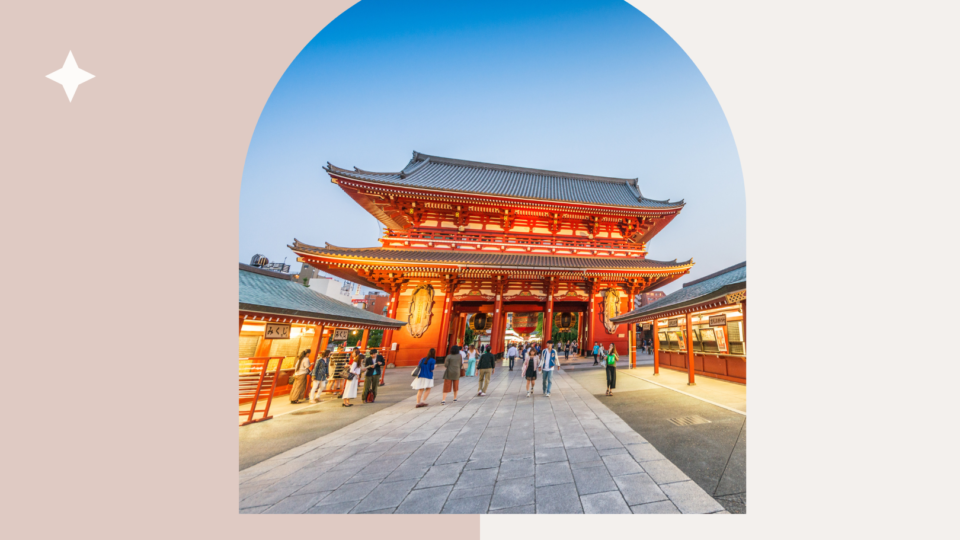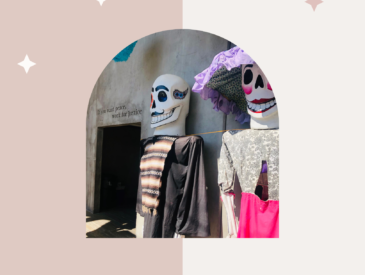Tokyo is a magical city that balances big city bright lights with traditional sacred spaces. You’ll be walking past a line of Apple stores and arcades, and you’ll suddenly find yourself stumbling across a fantastic shrine — smack dab in the middle of a bustling street. These shrines offer a glimpse into Japan’s rich history and spiritual practices. Tokyo alone is home to over 4,000 shrines and temples. Not sure where to start? Follow my guide to exploring Tokyo’s temples and shrines with kids.

Before your visit:
- Here’s some kid-friendly info about the basic concepts of Shintoism and Buddhism, the main religions of Japan.
Meiji Jingu Shrine
Meiji Jingu is a renowned shrine dedicated to Emperor Meiji and Empress Shoken. It symbolizes their role in modernizing Japan during the late 19th and early 20th centuries.
The shrine is set in a rambling and peaceful forested area in the heart of Tokyo. It reminded us of Kyoto, which feels much more rural than Tokyo’s urban backdrop. We spent hours walking through the sprawling gardens. It is a calming sanctuary in the middle of the hustle and bustle of Tokyo.
There is so much to see here; every turn in the path presents something new and cool for the kids to explore.
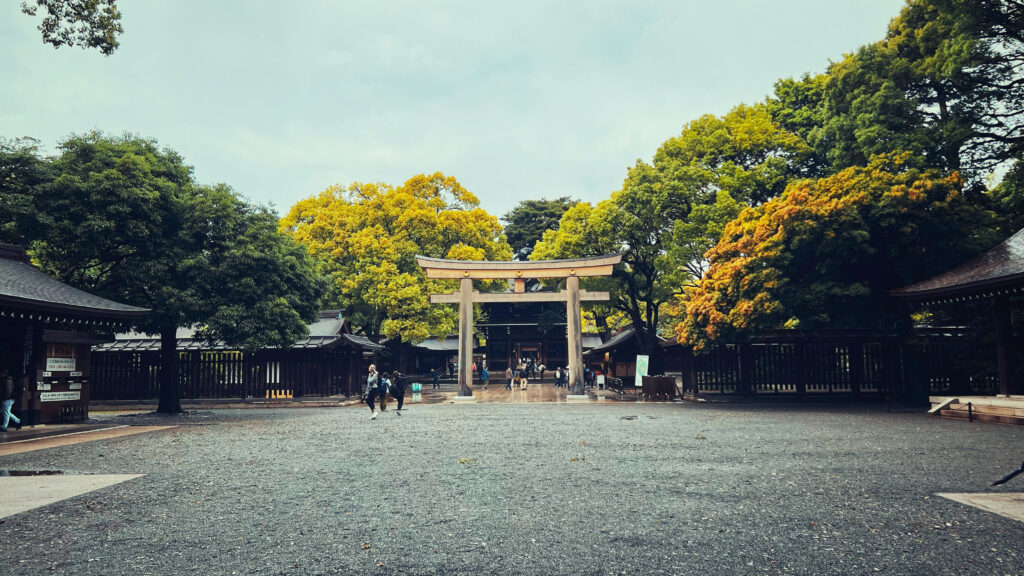
Location/Admission/Hours
The shrine’s main entrance is the south entrance near Harajuku Station. Here, you’ll find the enormous wooden torii gate. The north entrance is near Yoyogi Station, and the west is near Sangubashi Station.
Admission to the shrine and surrounding grounds: Free
Hours of the shrine and surrounding grounds: Sunrise to sunset
Admission to Meiji Jingu Museum: 1000 yen
Museum hours: 10:00 am to 4:30 pm (closed on Thursdays)
Admission to Inner Gardens: 500 yen
Hours of Inner Gardens: 9:00 am to 4:30 (until 4:00 pm from November to February)
Don’t forget to…
Check out the sake and wine barrels near the shrine’s main entrance. This displays over 200 sake barrels donated to the shrine by famous sake brewers nationwide. They are seen as sacred offerings to the Emperor Meiji.
You may also spot some wine barrels from France, symbolizing how Emperor Meiji spread Western culture through Japan during his reign.
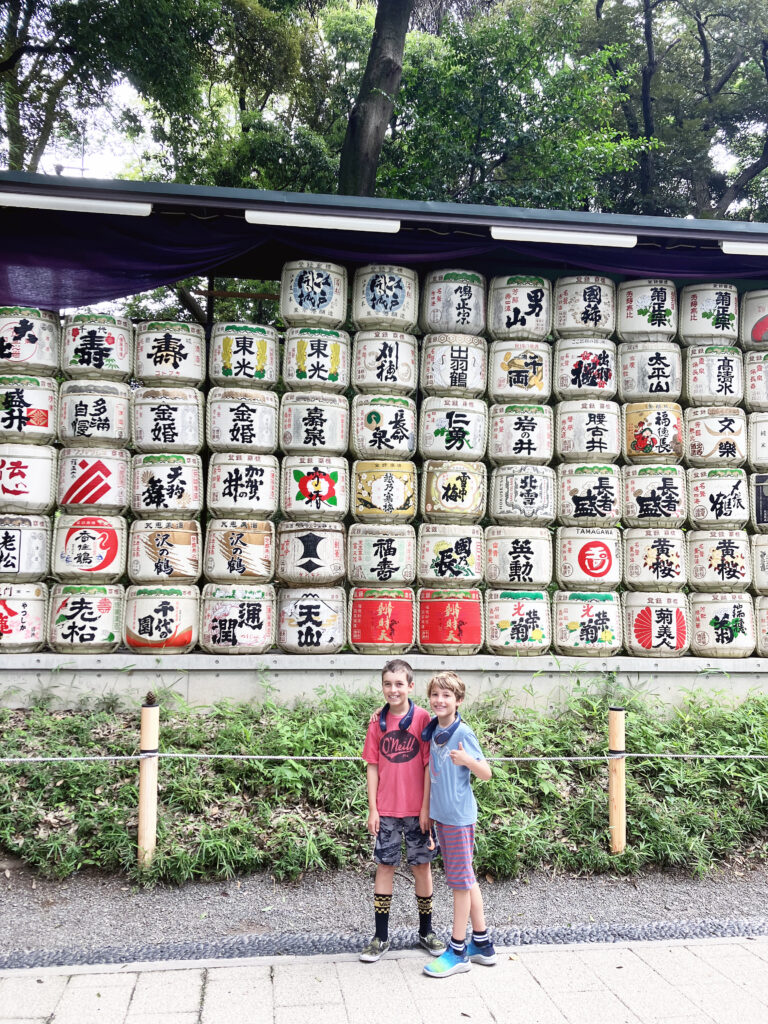
Togo Shrine
The Togo Shrine is dedicated to Admiral Togo Heihachiro, a critical naval figure in Japanese history who played a vital role in the Russo-Japanese War (1904-1905). The shrine was established in 1940 to honor Admiral Togo’s achievements and contributions to Japan. Visitors come to Togo Shrine to pay their respects to Admiral Togo and offer prayers for maritime safety.
Location/Admission/Hours
Togo Shrine is a quick walk from the Takeshita exit of Harajuku Station.
Admission: Free
Opening hours:
April-October: 6 am-5 pm
November-March: 6:30 am-5 pm
Don’t forget to…
Take the kids to the shrine while your significant other waits for a table at Gyukatsu Motomura Harajuku. I’m not going to lie—this shrine was initially not on our radar. However, we were planning to have lunch at Gyukatsu Motomura Harajuku. (Side note: this meal did not disappoint.)
The restaurant is TINY, and expect to wait at least an hour for a table. While my husband did the line, the kids and I explored and stumbled upon the Togo Shrine entirely by chance.
Togo Shrine features a tranquil atmosphere and a compact layout. There is a Koi pond, which my kids loved, and a small fountain, along with a wooden torii gate and a Japanese garden.
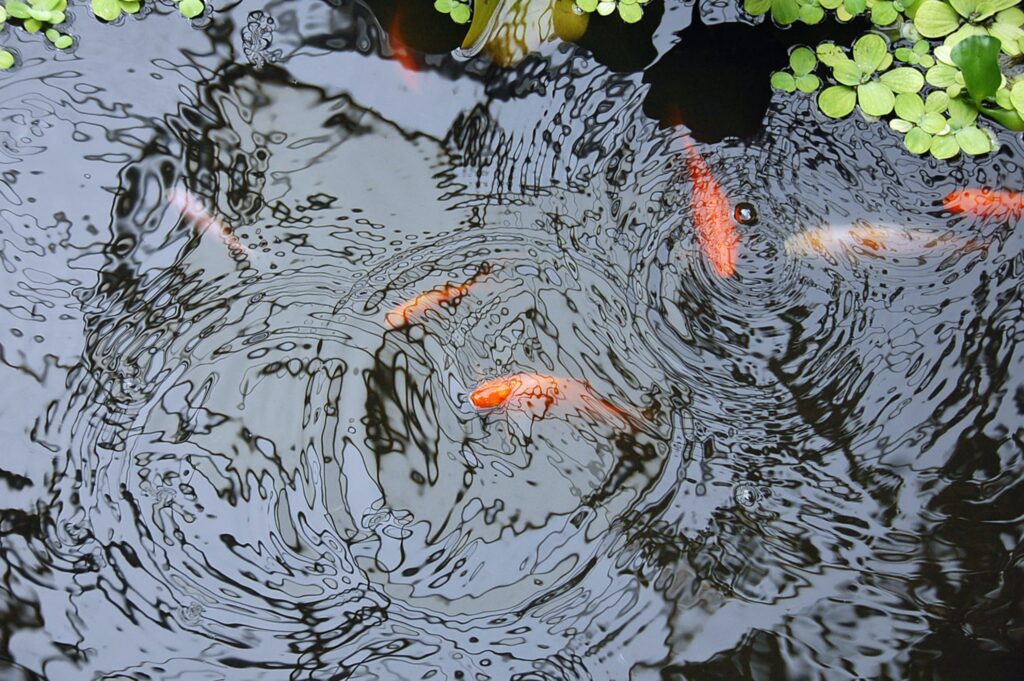
Senso-ji Temple
Located in the famous neighborhood of Asakusa, the Senso-ji Temple is a Buddhist temple that dates back to the 7th century and is one of Tokyo’s oldest and most significant temples. The temple’s main gate, Kaminarimon (Thunder Gate), is adorned with a massive red lantern and leads to Nakamise-dori, a bustling street lined with shops and food stalls selling souvenirs and traditional Japanese snacks.

Location/Admission/Hours
Senso-ji Temple is located just a few steps from Asakusa Station.
Admission: Free
Main Hall Hours: 6:00 am to 5:00 pm (opens at 6:30 am from October to March).
Don’t forget to…
- Bring cash, specifically small bills and coins. You’ll need these for food stalls, incense purchases, and omikuji fortunes in the temple.
- Try all the different snacks and treats on your walk up Nakamise-dori to the temple.
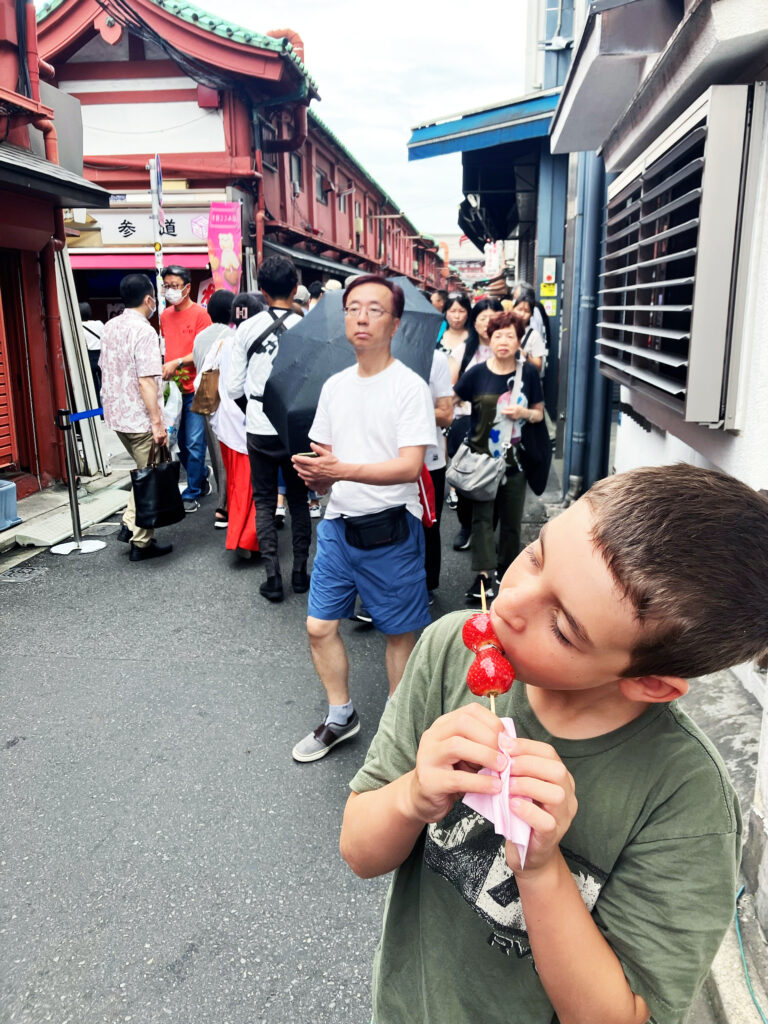
How Omikuji works
You can find omikuji, written fortunes, at shrines and temples all across Japan. If you want to participate in omikuji when visiting Senso-ji Temple, follow these steps:
- Enter the temple’s main hall and locate the omikuji area (it’s likely to be quite crowded).
- Place a 100 yen coin into a box located on the counter.
- Take hold of the cylindrical metal container, shake it, and flip it over to reveal a wooden stick.
- This stick will have certain characters, which you’ll compare with the characters on the front of the small wooden drawers above you.
- Examine the drawers until you locate the one that matches the characters on your stick. Open this drawer to retrieve your omikuji.
- If your fortune predicts good luck, you can take it home as a positive omen.
- Conversely, if you receive a lousy fortune, you can step just outside the temple and tie it onto one of the omikuji “trees.” This act signifies leaving behind the bad fortune and embracing the hope for a better one in the future.
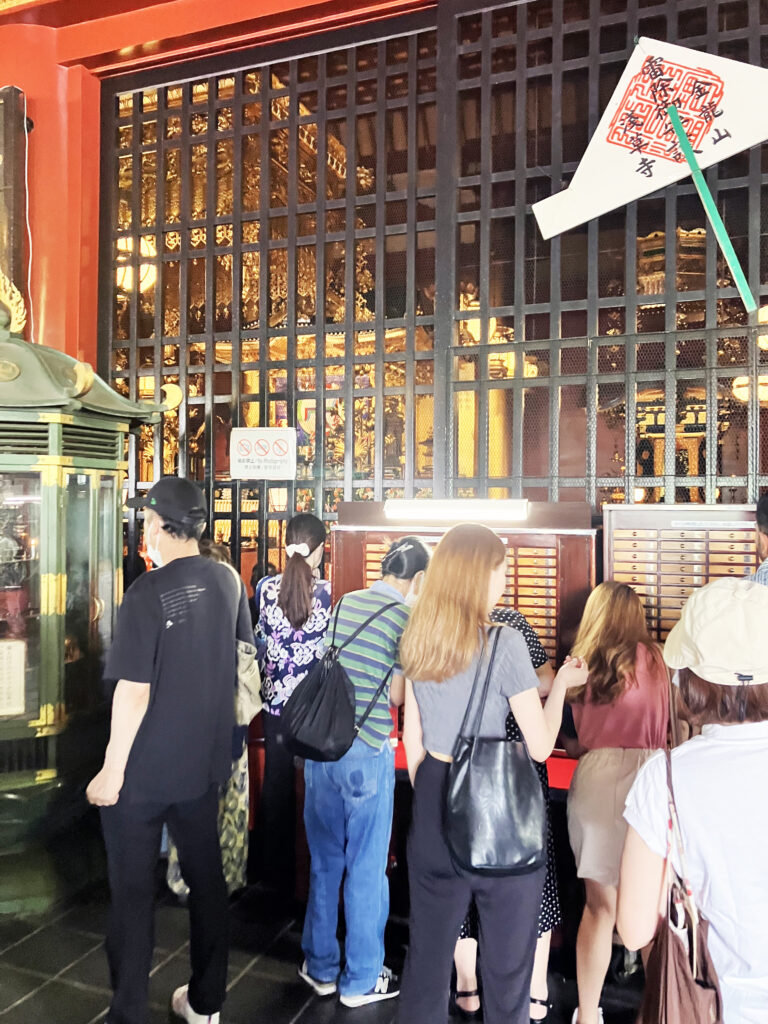
In Conclusion
Exploring the temples and shrines of Tokyo with kids is an adventure that combines cultural appreciation, spiritual understanding, and the opportunity to see some really incredible things in a really unbelievable city – a total win-win!
